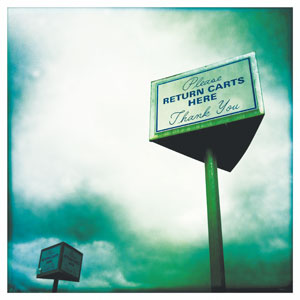

Facebook’s purchase of Instagram had CNN asking, “When did Facebook become so uncool.’ Uh, when it instituted timelines?
In this spectacular billion-dollar gulp, Facebook is trying to corner the market on photo-sharing via smartphones.
The much-smaller Hipstamatic user community is, as of last month, still allowed to share their photos on Instagram. On Instagram, of course, those images will now be Mark Zuckerberg’s property.
The appeal of sharing photos, of self-publishing, as it were, a daily edition of one’s activities, is unavoidable. People’s lives are moving so fast that they’re not sure if they’re real or dreams anymore. So naturally people like proof, require the documentation, the geotagging and the record of the time.
The little animated Vimeo video that describes Hipstamatic is lifted from the film The Hangover. A blacked-out young partier wakes up on the floor with half his mustache gone. What happened? Thanks to Hipstamatic and the photos he and his friends took, he can recall the wild night before—just as The Hangover‘s end titles revealed all the horrendous details of the bad evening.
Just as interesting as the sharing function is the way photos can be treated by these two apps. Instagram and Hipstamatic demonstrate the awesome presence of the integrity vacuum, that ever-hungering gullet in which all media and all art is but a quivering dust bunny in the path of a Dyson.
Hipstamatic’s $2, or rather $1.99, turns your too-crystally, too-much-information iPhone photos into an emulation of the smudgy colors of a 1970s Fhotomat. The appeal seems at first pure nostalgia.
Even as Facebook announced its monster banquet, there was bad news from Rochester: a layoff of 91 Kodak employees announced. Kodak’s tragedies are mitigated by the ultimate aesthetic triumph of the film-emulsion, through-the-viewfinder look.
Hipstamatic is trying to recover the mood of the ultimate democratic camera when it sells you pebbly black-plastic jackets for your iPhone. They can make your $400 phone, that obsidian jewel, look like the tough, cheap point-and-shoot jobs that even toddlers couldn’t break.
The film is gone, but the effects aren’t forgotten. These two apps institutionalize the clumsiness of the amateur photographer. Welcome back the flare, the fuzz, the blur that hints an index finger was sneaking up to the edge of the lens.
Some digital distortions recapture the warped, faded and color-rot of Polaroids left in the sun too long or dropped in the gutter. Maybe the weirdest of the many apps-within-the-app is the Hipstamatic shag-cut paper “Kodot Xgrizzled Film’ which re-creates the ragged margins of early-1950s photos.
Are the Instagram and Hipstamatic artistic options targeted at boomers trying to relive their long-fled youths: oldsters seeking the terrific turquoise skies and glowing skin tones of ’60s Kodakland? One of Hipstamatic’s mantras is “it’s hip to be square’: this, in honor of the 126 cartridge’s foursquare print. But it also seems a nod-out to a 1986 Huey Lewis tune for people old enough to remember it.
Hipstamatic’s Primary Gel Pack in cyan, magenta and yellow re-captures that 1969 post-apocalyptic psychedelic fear-fest. The technique can turn your ordinary garage bandmates into furtive denizens of Middle-earth. The sample Hipstamatic demonstrates depicts an empty hell-playground, shot through a filter that is the color of a boiled beet.
Hipstamatic filters brought controversy to correspondent Damon Winter, who did a series of photos on the war in Afghanistan. After Winter anonymously won third place in a Pictures of the Year International contest for his series “A Grunt’s Life,’ it was revealed that he’d used the Hipstamatic app.
Tampering with truthfulness? More like editorializing. The distorted colors of a helmeted head under the bamboo stalks recover that feeling “the LSD is starting to kick in,’ in a look familiar from Oliver Stone movies. These images of Afghanistan say one thing: “Vietnam.’ The photos practically sing Creedence Clearwater’s “Run Through the Jungle’ when you look at them.
But tell-tale in Hipstamatic’s marketing is the bold (or grotty) use of the nation’s various hipster-hives as names for the collect-one, collect-them-all packs. They’re named in honor of New York’s Soho, London’s Camden, Chi’s Wicker Park, Brooklyn’s Williamsburg, Tokyo’s Shibuza, Portland’s Pearl, and even the Mission. Names like these make publisher Adam Parfrey suggest a new name for the Hipstamatic: “Kodick.’
Blame the boomers? If it were pure nostalgia, why not the Haight, the Lower East Side, Venice? And Hipstamatic’s limited-edition branding with the SXSW festival definitely skews young.
It is somehow satisfying that this software co-exists with high-def and Blu-Ray. On one hand, the insistence on seeing every pimple on a 1950s actress’s cheek. On the other, the even stronger desire to fudge the details. The late designer Ralph McQuarrie once commented, “There is no button on the computer keyboard that says good taste.’ This gilded rainbow of effects from Instagram and Hipstamatic will be proving that truism like mad.
But the idea of a camera in every hand and pictures instantly transported across all platforms evokes a slightly scary thought: The flood of documentation indicates that not only are people’s lives moving fast but that they’re all converging, becoming all the same. The hundreds of ways of slicing or telling or tinting or aging these stories offer some hope for uniqueness.


